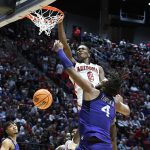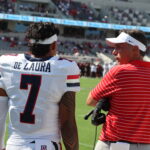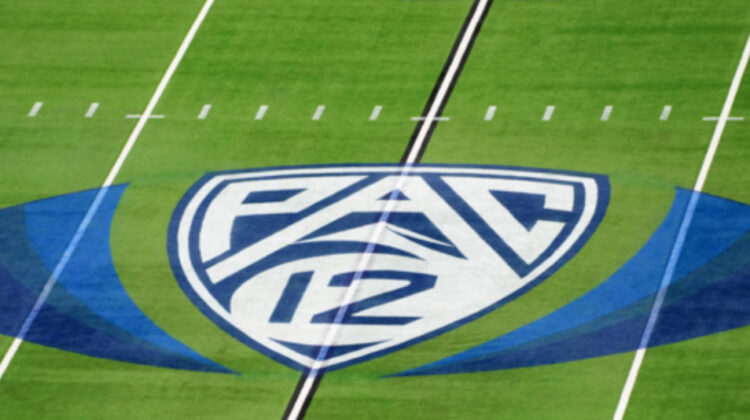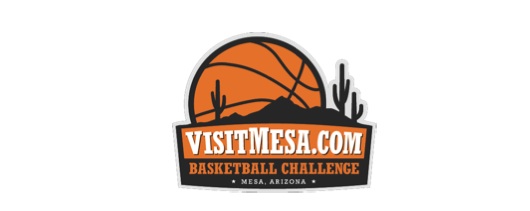The Hotline mailbag is published every week. Send questions to pac12hotline@bayareanewsgroup.com and include ‘mailbag’ in the subject line or hit me on Twitter: @WilnerHotline.
Some questions have been edited for clarity and brevity.
What are the media rights implications for the Pac-12 (and college sports) resulting from ESPN selling its main channel directly to consumers as a standalone streaming service? — @MattZemek
For those who missed it, the Wall Street Journal reported Thursday that ESPN will indeed become a direct-to-consumer offering.
Yes, the main network is being turned into a streaming platform, just like Apple and Amazon, Peacock and Paramount … and ESPN+.
When the transition happens — it’s undoubtedly years away — all the college football content owned and licensed by ESPN will be available on streaming.
Which would seem to undercut the narrative that the Pac-12 is doomed if the next media rights deal includes a streaming component.
Which is what the Hotline has been arguing all along:
The Pac-12 is not doomed if the media rights deal includes a package of games on streaming.
It’s only doomed if the media deal doesn’t include games on ESPN.
There are two reasons the conference must have a contractual agreement with ESPN:
— Because of the reach provided by the pay-cable ecosystem (although that would be rendered moot if the flagship ESPN network becomes a streaming platform).
— Because a contract with ESPN would force the network’s highly influential studio shows to talk about Pac-12 games, interview Pac-12 players and coaches and show Pac-12 highlights.
That’s the real value in a partnership with ESPN: the brand-building component.
If you believe that placing a sizable portion of Pac-12 football inventory on a streaming platform is certain death — and that everything must stay on linear networks — then you simply haven’t been paying attention to industry trends.
As the headline to the Wall Street Journal article states: “ESPN Plans to Stream Flagship Channel, Eyeing Cable TV’s Demise”
And don’t forget the other giant piece of sports media news this week, also delivered by the WSJ: One NFL playoff game next season will be broadcast exclusively on Peacock, the streaming arm of NBCUniversal.
The shift of live sports content from linear to streaming platforms is moving at a brisk pace, with no slowdown in sight.
That said, the timing of the tipping point is uncertain.
Will streaming become the mainstream sports-viewing platform in three years? In five years? In the 2030s?
It’s probably not in the next year or two, but it’s close enough that ESPN executives have given the transition project an internal name (“Flagship,” per the WSJ).
The Pac-12 must consider the timing as best it can. But even if ESPN’s shift to streaming is five years away, that likely would coincide with the middle point of the conference’s next media deal.
And when ESPN moves to streaming, wide public acceptance of the platform will follow, immediately.
San Diego State athletic director JD Wicker said the Aztecs will land in either the Big 12 or the Pac-12. Does SDSU already have an invite to the Big 12? If so, why haven’t they just accepted that offer? — @trintran
I have no reason to believe a formal offer is on the table. But if that were the case, the Aztecs haven’t accepted because their preference (on numerous levels) is membership in the Pac-12.
The Pac-12 works better for SDSU athletes, alumni and fans because of the geographic proximity (less travel distance, lower travel costs).
And it works better for SDSU institutionally. Alignment with Stanford and Cal would be a dream come true for the California State University system, even if the partnership includes just one campus.
The Aztecs will wait as long as possible for a Pac-12 offer.
What’s the hold-up to simply adding SMU and San Diego State, locking down a media deal and moving on? Seems the most sensible path to me to securing a short-term future (five years) for the Pac-12. Otherwise, it’s going to collapse. — @EZembeck
Based on recent comments by Washington State president Kirk Schulz, the economic environment has played a role:
“I know at least one of the partners we were talking to said, ‘We’re ready to sign today, but the optics of us announcing that we’re laying off X number of people and we signed a multimillion-dollar deal with the Pac-12 are just not the best, so we’re going to have to wait six weeks.’”
Now, to be clear: Economics aren’t the only reason for the delay; nor are they the primary reason. If the Pac-12 had received an offer it couldn’t refuse, this process would be over and done.
At this point, the objective is to craft an acceptable offer, a satisfactory offer — an offer good enough to prompt the schools to sign a grant-of-rights agreement.
We believe that’s the most likely, but hardly guaranteed, outcome.
Commissioner George Kliavkoff has maintained all along that being the only Power Five conference with football rights available would work to his advantage in the marketplace. (The ACC, Big Ten, Big 12 and SEC are all locked up until at least 2030.)
The next six or eight weeks will render judgment on his theory.
Why wouldn’t UNLV be considered a serious candidate to join the Pac-12? The Las Vegas market is huge. It’s a decent research school. The football team plays at a mega stadium, and the men’s basketball team is decent. — @CelestialMosh
First of all, Las Vegas isn’t a “huge” market. It was No. 40 in the Nielsen market rankings for 2021, behind Salt Lake City (30th) but ahead of Tucson (64th).
Second, while it qualifies as an R1 research school, UNLV’s placement in the U.S. News and World Report ranking of national universities (285th) probably makes the Pac-12 presidents recoil.
Third, although the football team plays in a fabulous stadium (Allegiant), the program itself is on the bottom tier in the FBS.
Compared to San Diego State as an expansion candidate, the Rebels don’t carry the geographic necessity, aren’t as competitive on the field, have a smaller media market and arguably don’t stand up academically.
The Pac-12 presidents granted approval for Kliavkoff to examine four schools as expansion candidates. SDSU and SMU are two; Colorado State might be the third; and the fourth is a complete mystery.
I would be mildly surprised if it’s UNLV.
Is there any long-term fallout for Big 12 commissioner Brett Yormark for the campaign to destabilize the Pac-12, or is this simply the new normal? Could this help strengthen an ACC-Pac-12 alliance while alienating the Big 12? — @SoCal_Pony
There won’t be any repercussions. Whether you believe the Big 12’s efforts are unbecoming or fall within the framework of healthy competition, there are no rules against destabilization attempts.
Nor should there be.
Yormark is doing what he believes is best for his conference.
And let’s not forget, the Pac-12 created the opportunity for those efforts by taking 11 months (and counting) to secure a media rights deal.
As we have written previously, Kliavkoff’s lack of urgency created a risk, especially with another conference working to send the Pac-12 the way of the Dodo.
And any partnership with the ACC would be financially motivated, not forged by a perceived common antagonist. If the coastal conferences see a path to added revenue, they’ll follow like moths to light.
Our strong suspicion is that any opportunity would have already presented itself.
You have been setting Pac-12 survival odds at -4.5. If nothing changes but the calendar, how long until the odds drop to -2.5 (less than a field goal)? — @Wiley_E_Dawg
Actually, Pac-12 survival is currently a 4-point favorite over Pac-12 extinction (roughly 60 percent probability). That’s up from the low of 3.5 points a month ago but below the wintertime high of 5.5.
The Hotline moves the number based on circumstances.
It dropped precipitously in March, when a deal was expected but never came, then inched back up when Arizona’s president (Robert Robbins) and Colorado’s chancellor (Phil DiStefano) said they were willing to be patient.
If presidential panic is removed from the equation, the conference stands a better chance of surviving.
As of today, I have no plans to shift the line. We’ll see what June brings.
If the Pac-16 would have happened last decade, would the Los Angeles schools still be moving to the Big Ten and would Texas and Oklahoma still be moving to the SEC? — @draywilson29
No.
Also, no.
The Power Five would have turned into the Power Four, with no Big 12, or perhaps the Power Three — the Big Ten and SEC might have responded by caving up ACC.
Basically, the structural changes I anticipate in the 2030s would have unfolded in the 2010s.
*** Send suggestions, comments and tips (confidentiality guaranteed) to pac12hotline@bayareanewsgroup.com or call 408-920-5716
*** Follow me on Twitter: @WilnerHotline
*** Pac-12 Hotline is not endorsed or sponsored by the Pac-12 Conference, and the views expressed herein do not necessarily reflect the views of the Conference.
Related posts:

(AP Photo/Denis Poroy)
Survive and Advance – Wildcats Move on to Sweet 16 Wilner Hotline – NFL Draft winners and losers, the Pac-12 perspective
Wilner Hotline – NFL Draft winners and losers, the Pac-12 perspective
 VIDEO – Jon Wilner broke the UCLA/USC to Big Ten story, he went in-depth with Brad
VIDEO – Jon Wilner broke the UCLA/USC to Big Ten story, he went in-depth with Brad
 Pac-12 rewind: Arizona, Oregon State shine while Riley’s offense delivers and Penix thrives, but Utah’s playoff hopes take huge hit
Pac-12 rewind: Arizona, Oregon State shine while Riley’s offense delivers and Penix thrives, but Utah’s playoff hopes take huge hit


